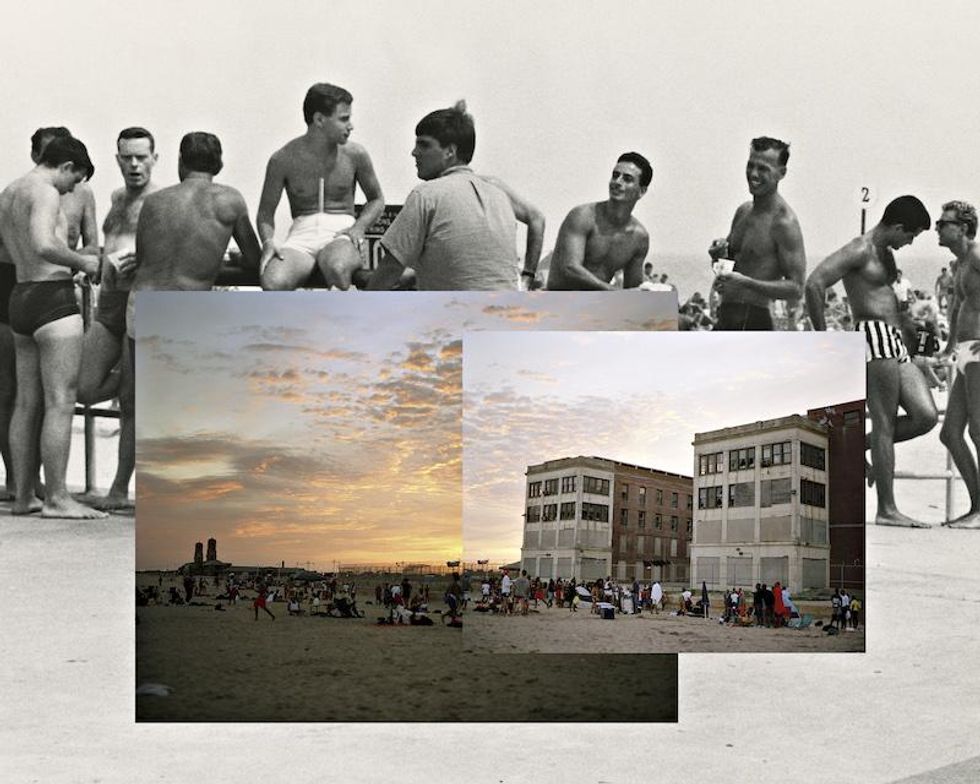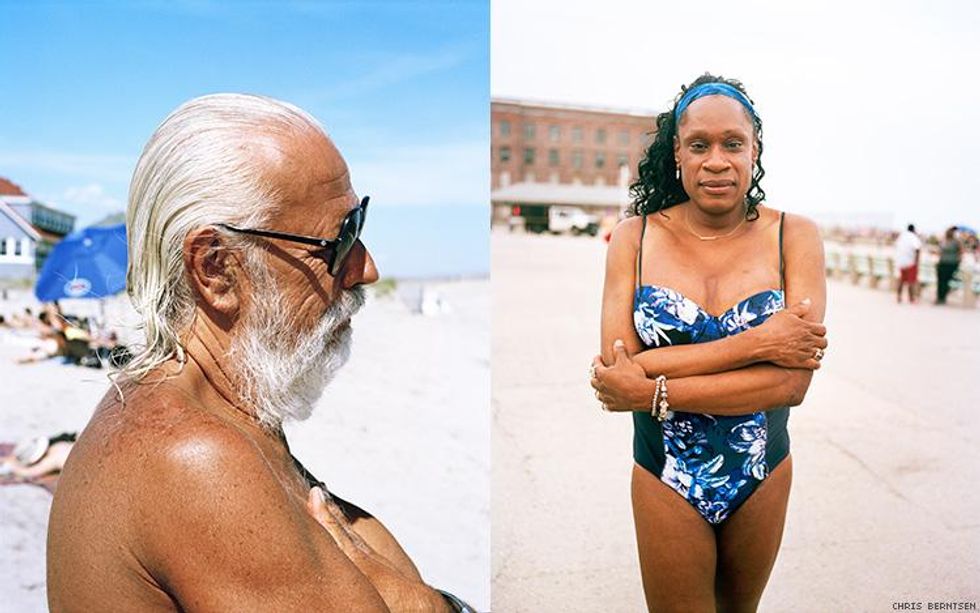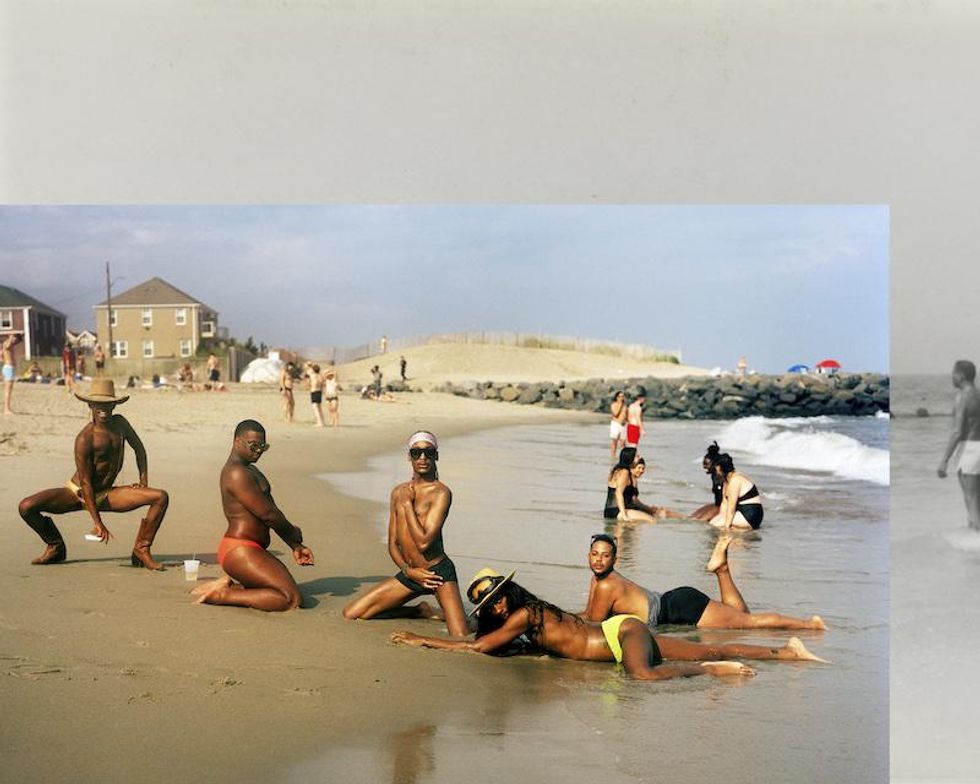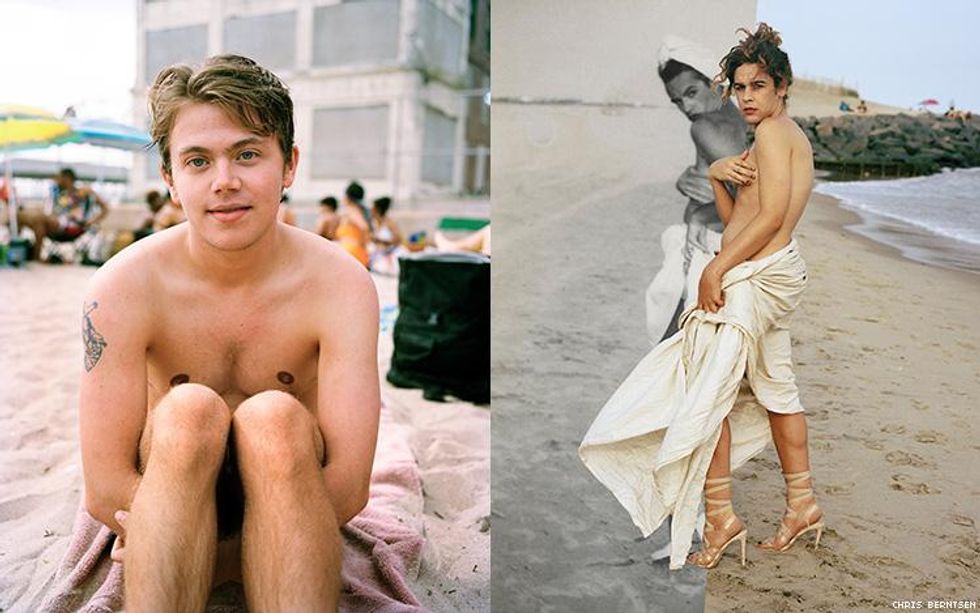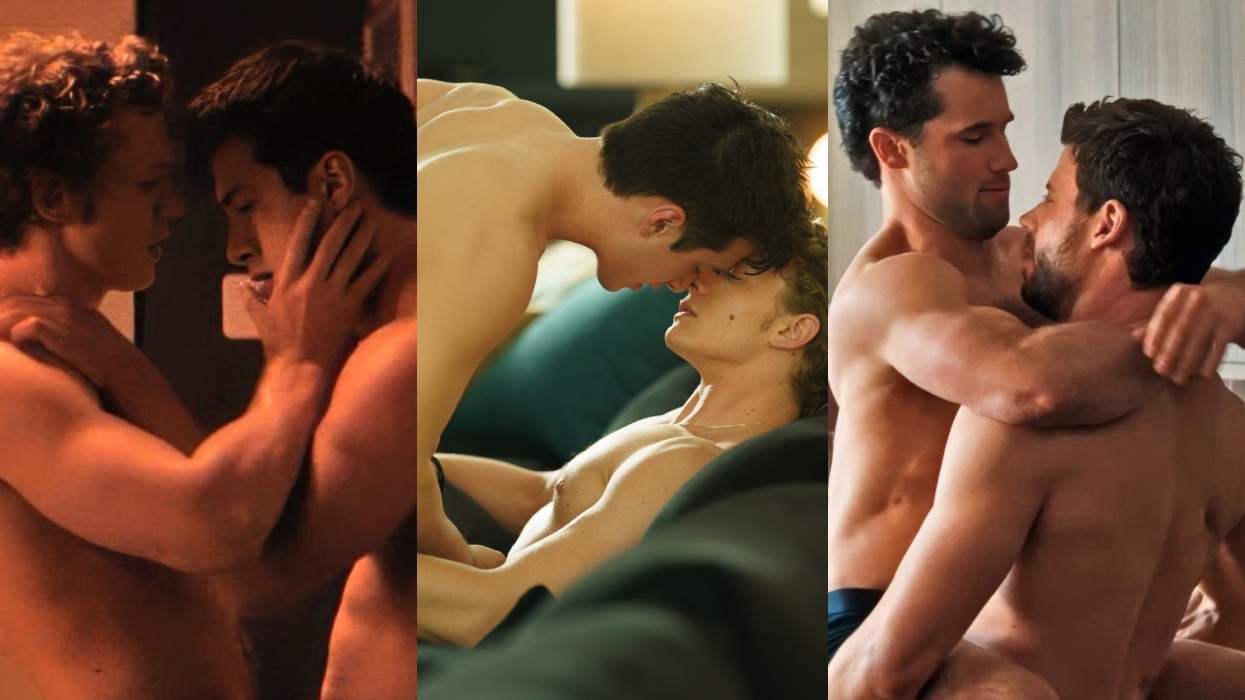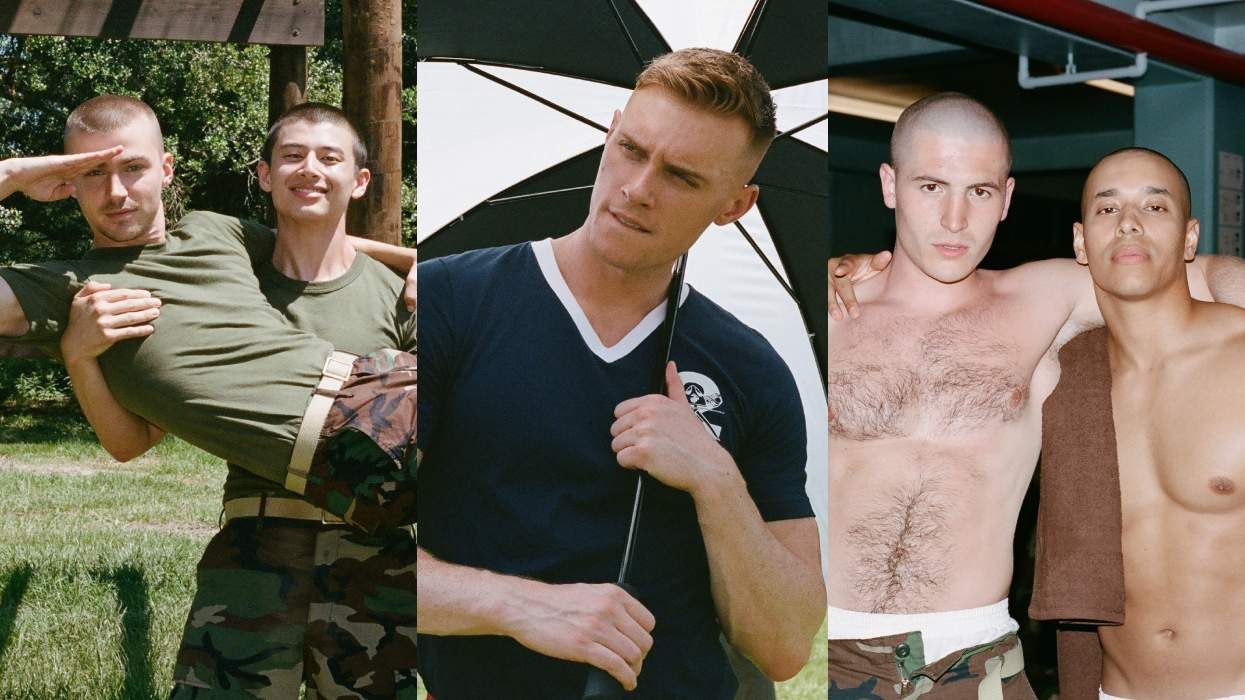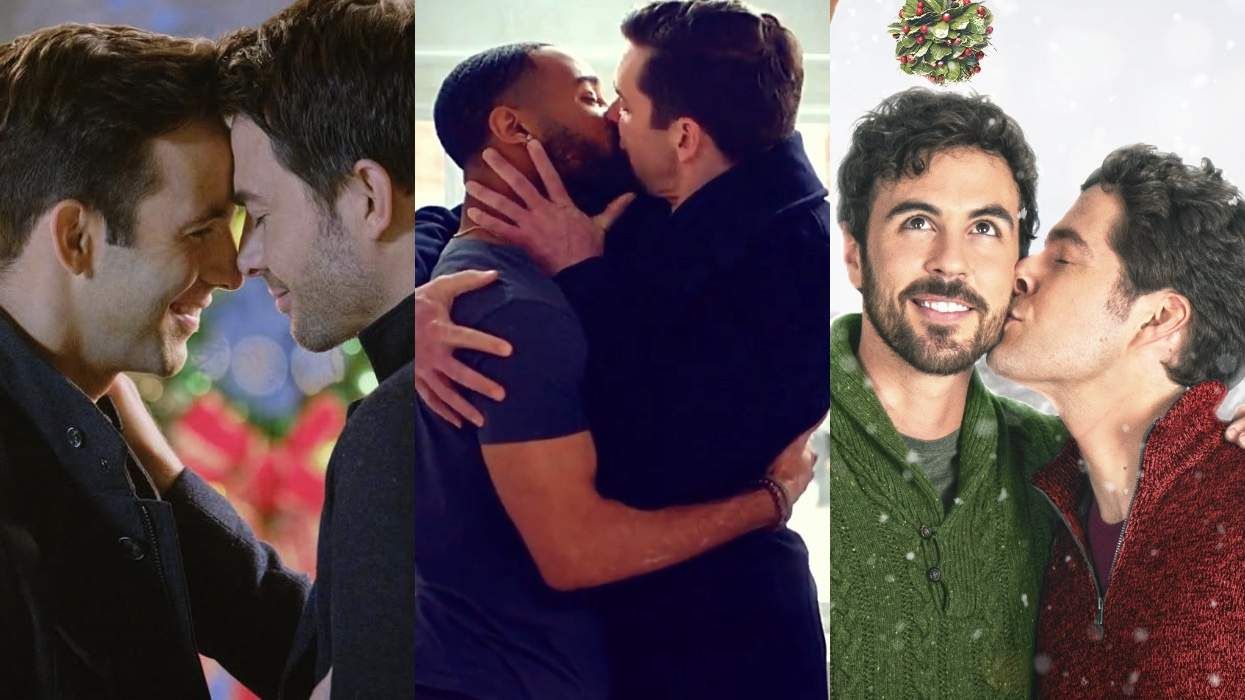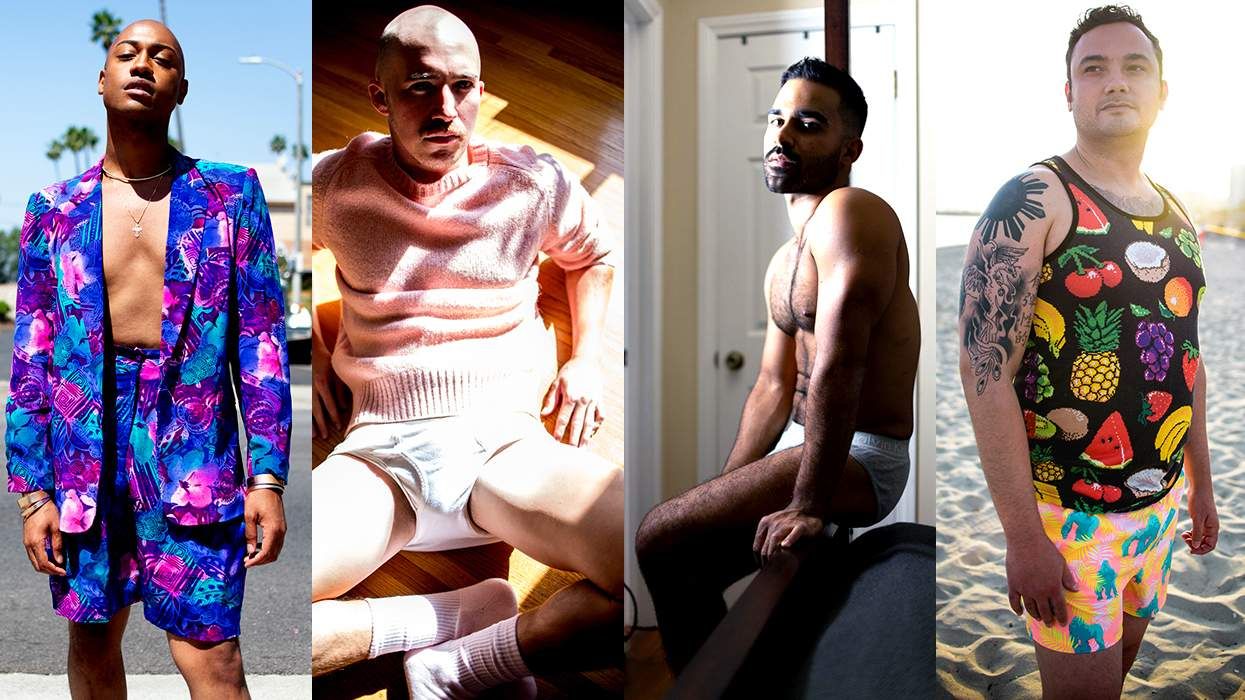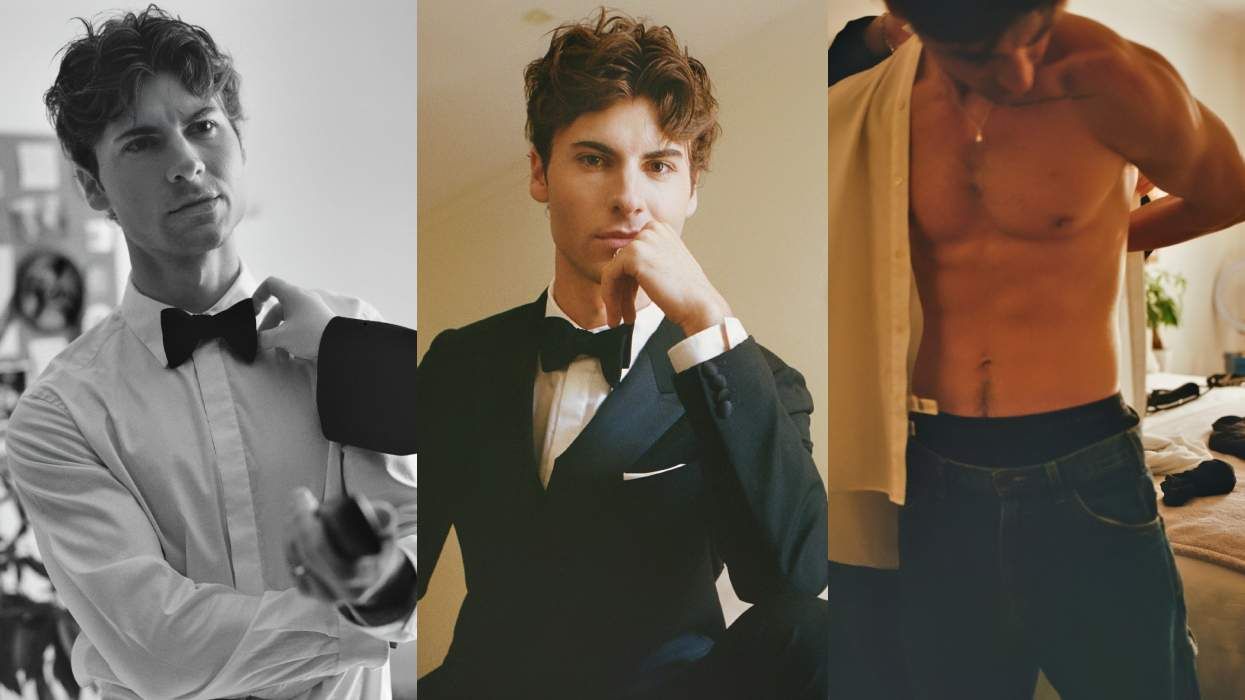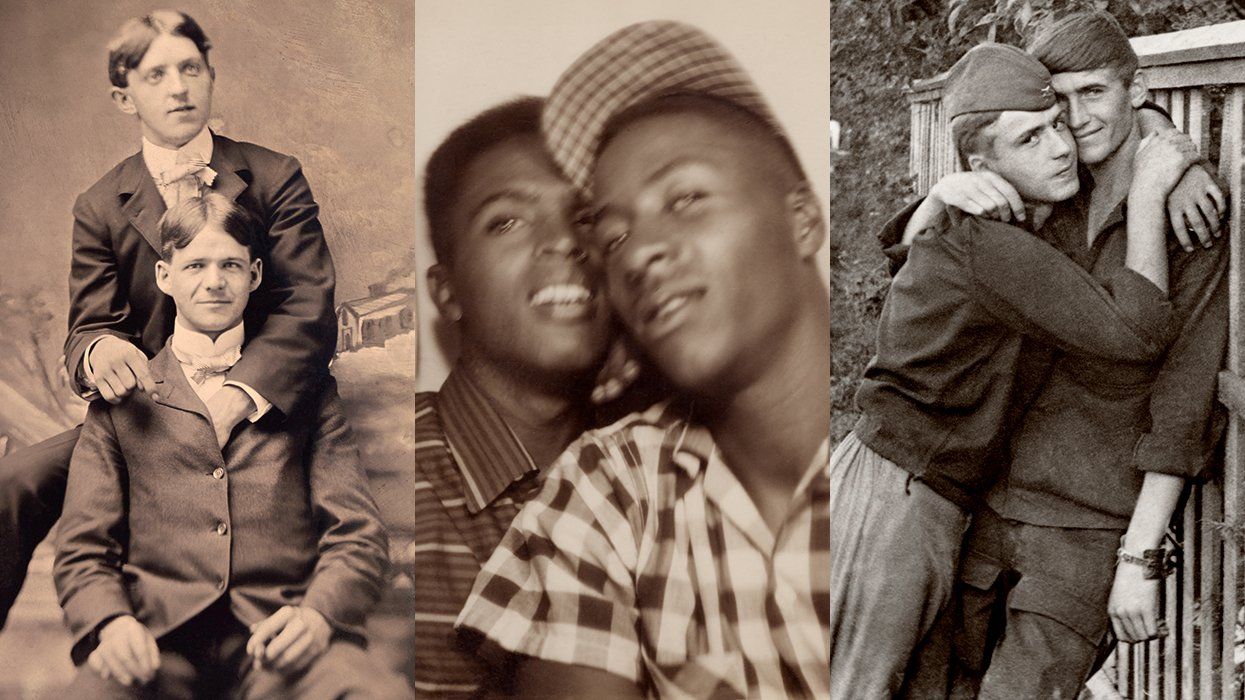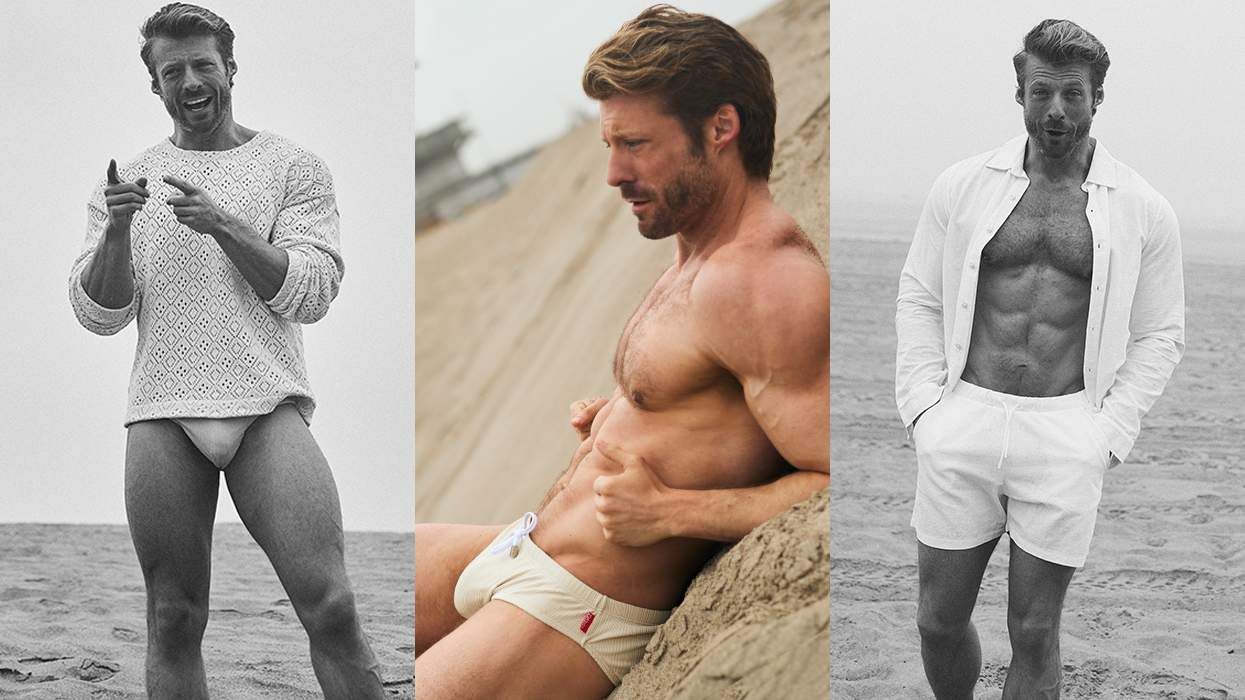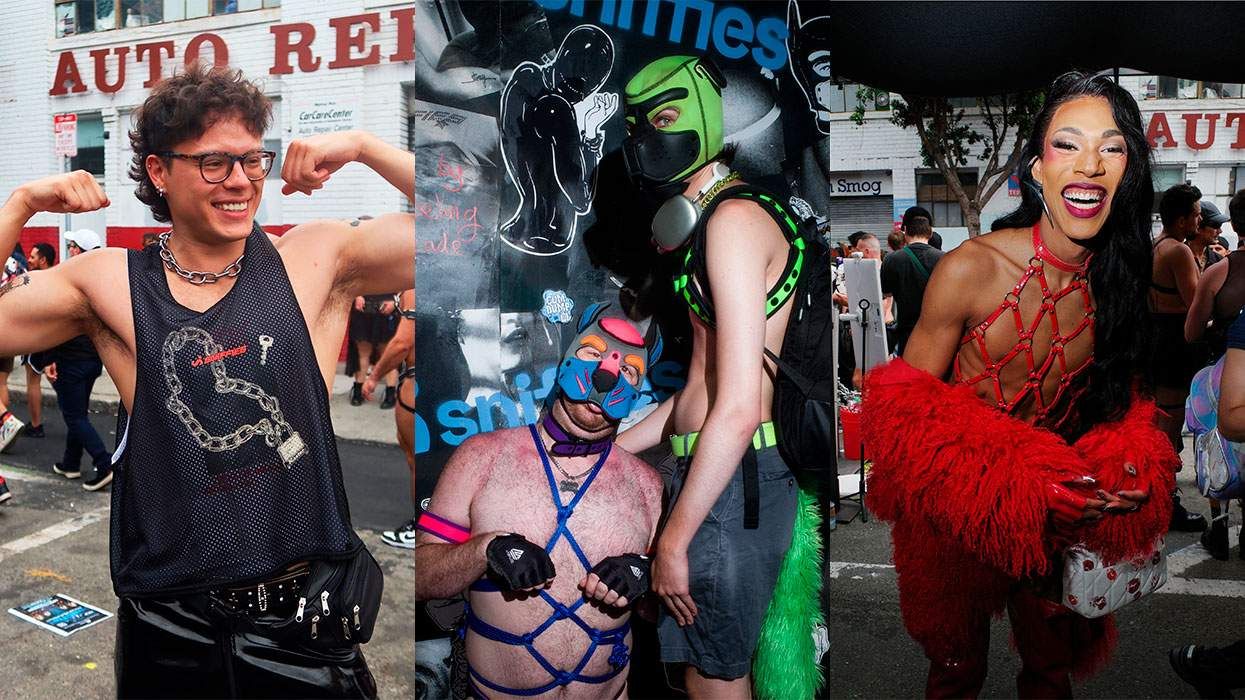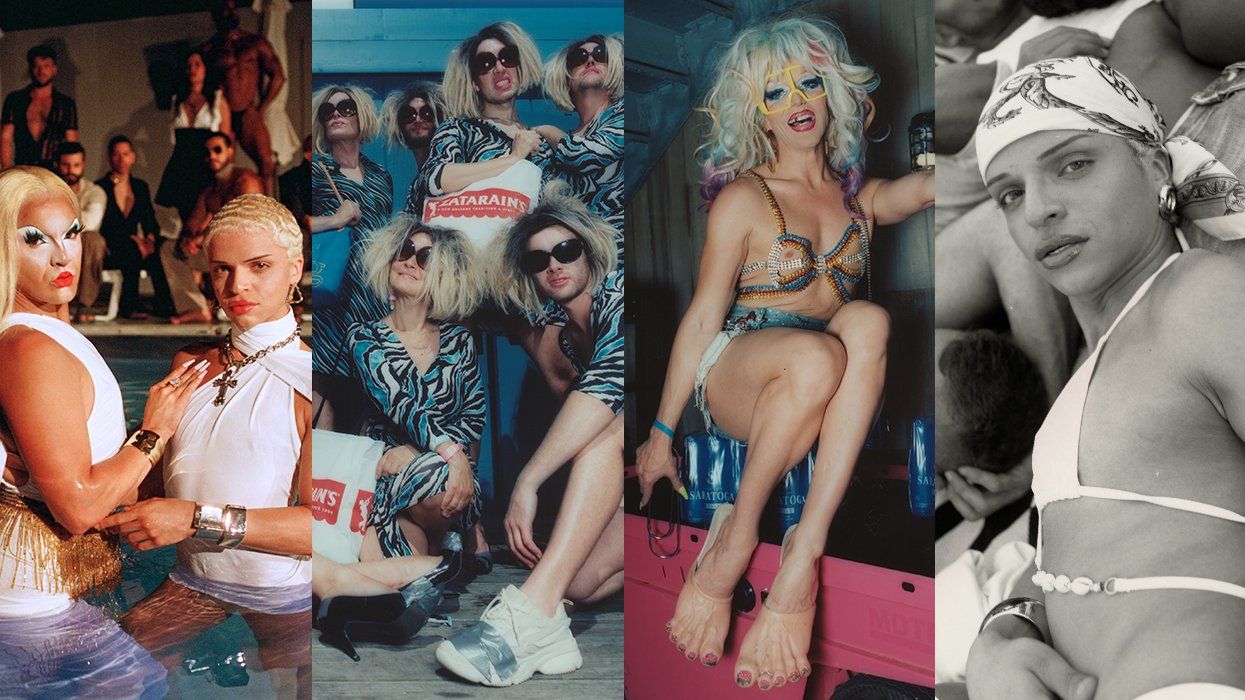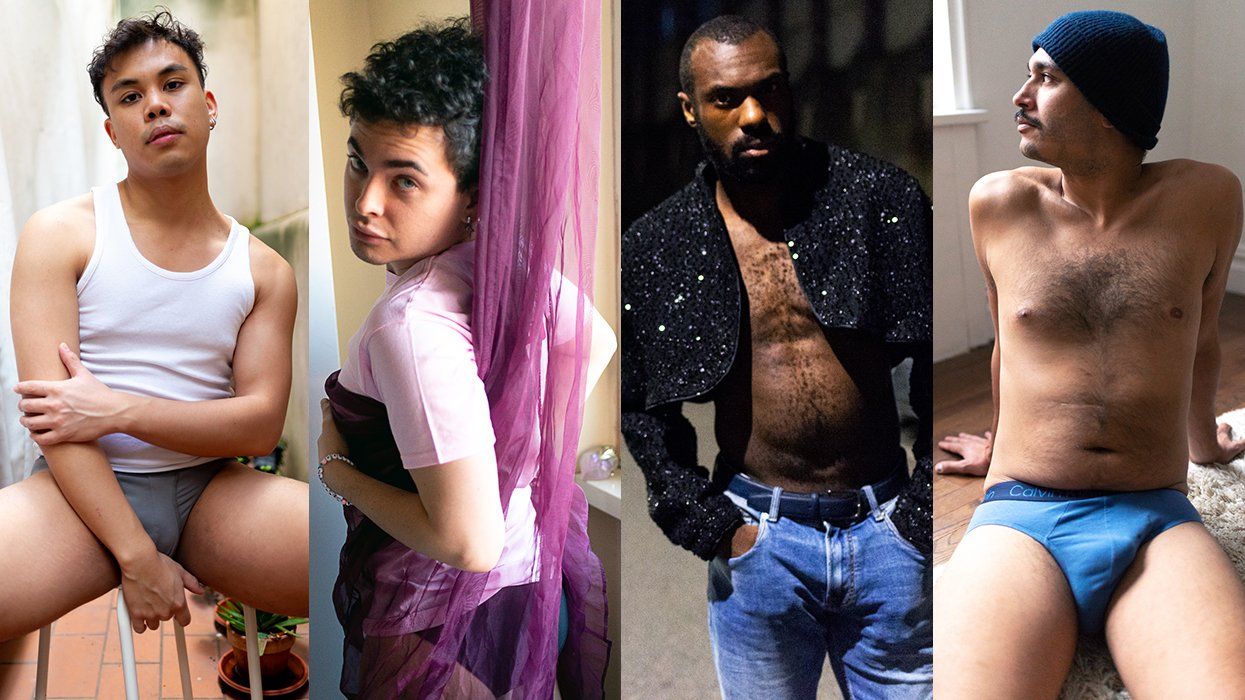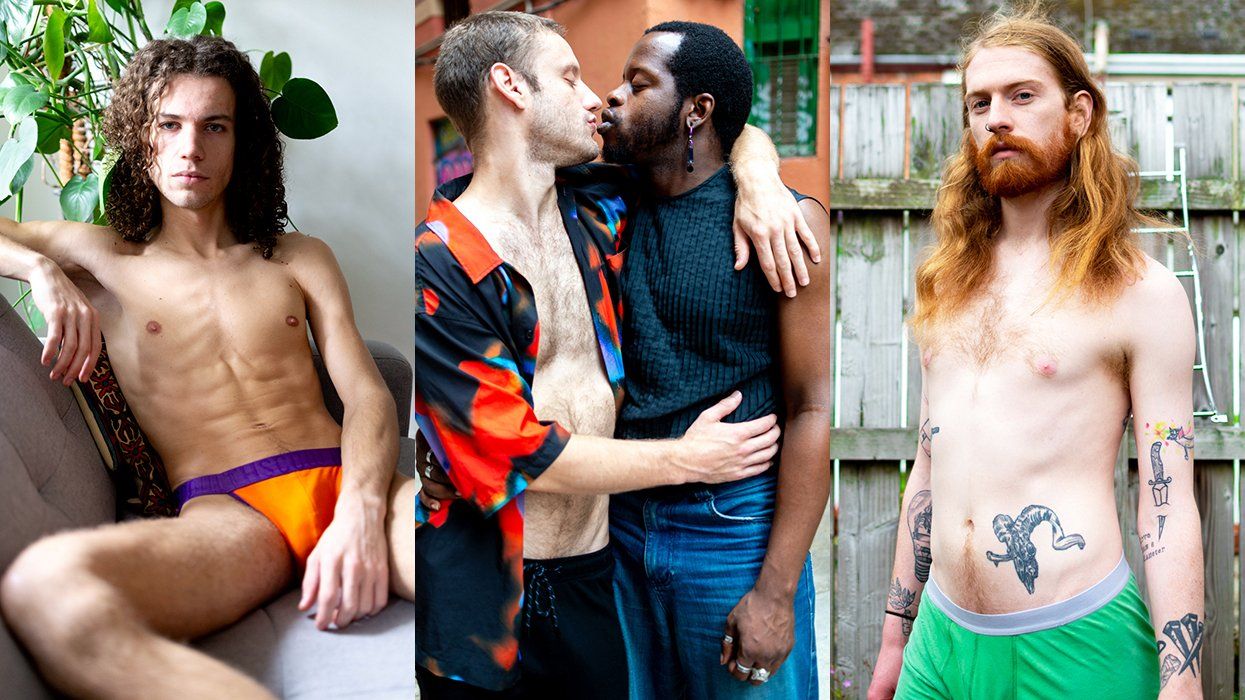Chris Berntsen has been a fixture at Jacob Riis park for nearly five years. Every weekend between Memorial Day and Labor Day, the 34-year-old photographer treks to the sparkling stretch of white sand on Rockaway Peninsula's southwestern edge in Queens, New York, to document the community that gathers in the shadow of the decrepit Neponsit Beach Hospital, a former tuberculosis sanitorium sitting abandoned for two decades.
"The first time I ever went to the beach, Ms. Colombia was there," Berntsen says, referring to the beloved and colorfully bearded performer, a regular on this scape prior to her death in 2018. A memorial to Ms. Colombia erected by beachgoers still stands, and she'll be further immortalized when the first "Ms. Colombia Walk" takes place on August 24. "I took this really bad photo of her, and that was how my project started." Berntsen, who sees the park as an ancestral home, captures the range of people -- a couple kissing in the seafoam, two muscled men embracing in the waves -- that come together to Riis to sunbathe, swim, and play. It's known today by locals as a gay beach, an affirming space for queer and trans bodies to be publicly visible, but few know its history as such, which dates back nearly a century.
The beach was named for the Progressive-era photojournalist Jacob Riis in 1914. Known for his 1890 book How the Other Half Lives documenting the harsh conditions of tenement life in New York, Riis was also an advocate for the park. It is often called the "people's beach," developed for poor immigrants, as opposed to nearby Jones Beach, which was meant to attract middle-class weekenders.
Documentation of Riis Park as a nude-friendly beach and a popular cruising site dates back to the 1950s. A 1963 New York Times feature dubs Jacob Riis Park among the summer vacation spots "the New York homosexual can find" that are "frequented by his kind." Later in 1974, the Times noted that "Bay 1 at Riis Park...has for some years been a gathering place of homosexuals." In a 1977 interview conducted by Rudy Grillo for local radio station WBAI, Stonewall veteran and grand marshal of the first Pride parade "Mama" Jean DeVente recalls her own experiences at Riis Park in the mid-1950s. "When the bar closed we would head out to Riis Park... and everyone...slept there," she says. "[You'd] sleep until maybe 8 or 9 if you were lucky, before a queen woke you up with their little fights." She also notes "women were busy making love" and "you knew you could pick up another girl" there.
During that interview, Grillo recalls the police presence on the beach around the same time, noting that LGBTQ+ visitors might be ticketed for petty violations like sitting on or jumping over rails, or for wearing bathing suits that were too small. "I remember the cops harassing people," he says. "They gave me a ticket because they said my bathing suit was pulled up too high in the back. There was nothing wrong with my bathing suit."
Though policing of LGBTQ+ beachers has been a cat-and-mouse game throughout the park's history, it was after the beach's assimilation into the National Park Service in 1972, when Riis Park became part of the 26,000-acre federally operated Gateway National Recreation Area, that authorities began cracking down on nudity. In one 1974 raid of the beach's bathhouse, 11 men were arrested by park policemen for engaging in public sex. In 1980, the Times quoted Joel Gerstel, then president of the Rockaway Chamber of Commerce, complaining about the nudity: "We feel the federal government should draw the line at lewdness." In the same article, Herbert S. Cables Jr., superintendent of Gateway at the time, expresses difficulties in hiring experienced and sympathetic rangers to work at the park. "I've had to accept what I consider less-than-the-best staffing," he says. "They are not comfortable dealing with minorities."
Furthermore, federal rules regarding nudity in Riis Park had long been at odds with the laws of New York. It wasn't until 1983 that the state passed a law banning nude sunbathing at the beach. Despite its status as a haven, Riis is located in a predominantly conservative area in an otherwise overwhelmingly blue state -- conflicts with Rockaway residents have created tension for beachgoers for years. In 2012, for example, neighbors demanded the city build a fence to cordon off Riis Park, expressing concerns about children being exposed to nudity.
Today, it is not uncommon to see police officers patrolling the area on horseback. In fact, Berntsen broadened the scope of his work after the arrest of Brooklyn photographer Krys Fox on July 4, 2016. After his towel slipped off during a photo shoot, Fox was immediately tackled by undercover police officers and dragged off the beach, he told reporters at the time. Video shot at the scene shows at least four officers, two wearing street clothing, carrying Fox with his hands behind his back as he repeatedly cries for help. (Fox was later charged with disorderly conduct and public nudity.) Berntsen, who was at the beach that day, describes the event as "brutal" and notes that what the video does not show is Fox "being slammed into the sand."
"Jacob Riis photographed things he wanted to see not exist," Berntsen says. "And I want to photograph things that I want to see exist." Lately, Berntsen has worked with New York's LGBT Center to archive images taken here by late photographers like Richard Peckinpaugh and Frank Hallam. He then collages his own contemporary works with these archival photos (on view at Jenkins Johnson Gallery in Brooklyn through August 17). It is part of an ongoing effort to illuminate and preserve Riis Park's legacy as a queer beach, to showcase the community stronghold that predates many of the laws. "We don't think of queerness as having such a long lifespan, but this has been a gay beach for longer than most people live," he continues. "I need to create visual proof of how important and sacred this space is for us."
RELATED | These Vintage Nudes by Tom Bianchi Will Take Your Breath Away



